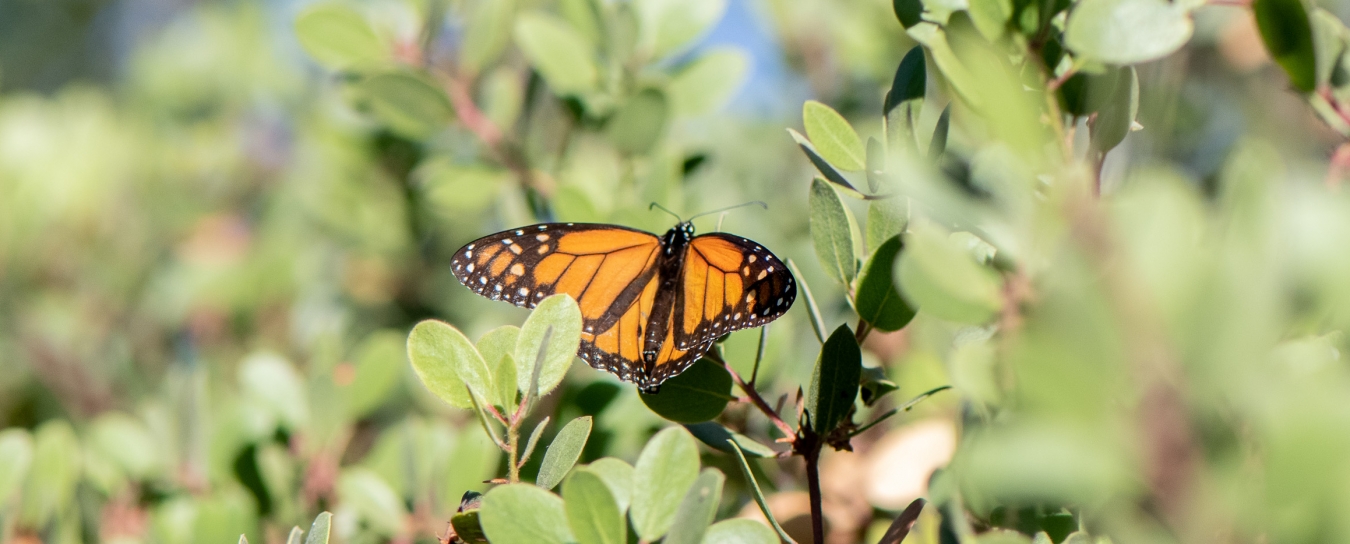
Invertebrates
See our handy guide to critters found in local homes and our Central Coast Butterfly FAQ. Browse the insects and other terrestrial arthropods we’ve identified. Check out local marine invertebrates, particularly bivalve mollusks and intertidal organisms.
- Anthropology
- Rocks & Fossils
- Invertebrates
- Vertebrates
- Botany
- Astronomy
- Fungi
- General
- Recently Asked
Weird fly or bee
I saw this bee in Oxnard licking a plumeria leaf, roughly about 1/4” in size. The hind end area has a longish black part sort of like a stinger. The body is greenish and the eyes are definitely green. I can’t find anything on the net with similar wing markings.


Curator Response
Hi Amy,
This beautiful little creature is a fruit fly in the family Tephritidae. This family is in the “two-winged fly” order Diptera, aptly named since this is the dominant insect group with one pair of wings rather than two pairs (certain male scale insects have only one pair, but these are tiny and rarely seen). This feature is very useful for ruling out stinging insects, bees and wasps in the order Hymenoptera, since there are no flies that sting. Aristotle was actually the first to notice this (in History of Animals): “and, by the way, no insect with only two wings has a sting in the rear.” In practice, however, it can be very difficult to rule out the presence of a second pair of wings in the field, since these are often hidden by the first pair!
Based on the highly specific and intricate wing markings, I’m able to tell that this individual belongs to the genus Trupanea, of which there are no fewer than 15 species in California! These are all quite similar to each other and are best distinguished using microscopic characteristics, so I won’t attempt a species ID from the photos. However, based on the photos and your description of the long black part at the rear end, I can tell that this is a female—this structure is an ovipositor for laying eggs in flowers. Larvae of these flies are known to feed within the ovaries of flowers, mostly in the composite family (Asteraceae), but in other plant families as well. A paper from 1992 summarized all of the known larval host plant records of Trupanea known from California and Plumeria was not listed. While it’s possible that the association with Plumeria was more than incidental, adults are generalist feeders on sweet secretions, so my guess is that it was either “tasting around” for a suitable host plant, or just stopping by for a snack!
Thanks for sharing,
Schlinger Chair and Curator of Entomology Matthew L. Gimmel, Ph.D.

